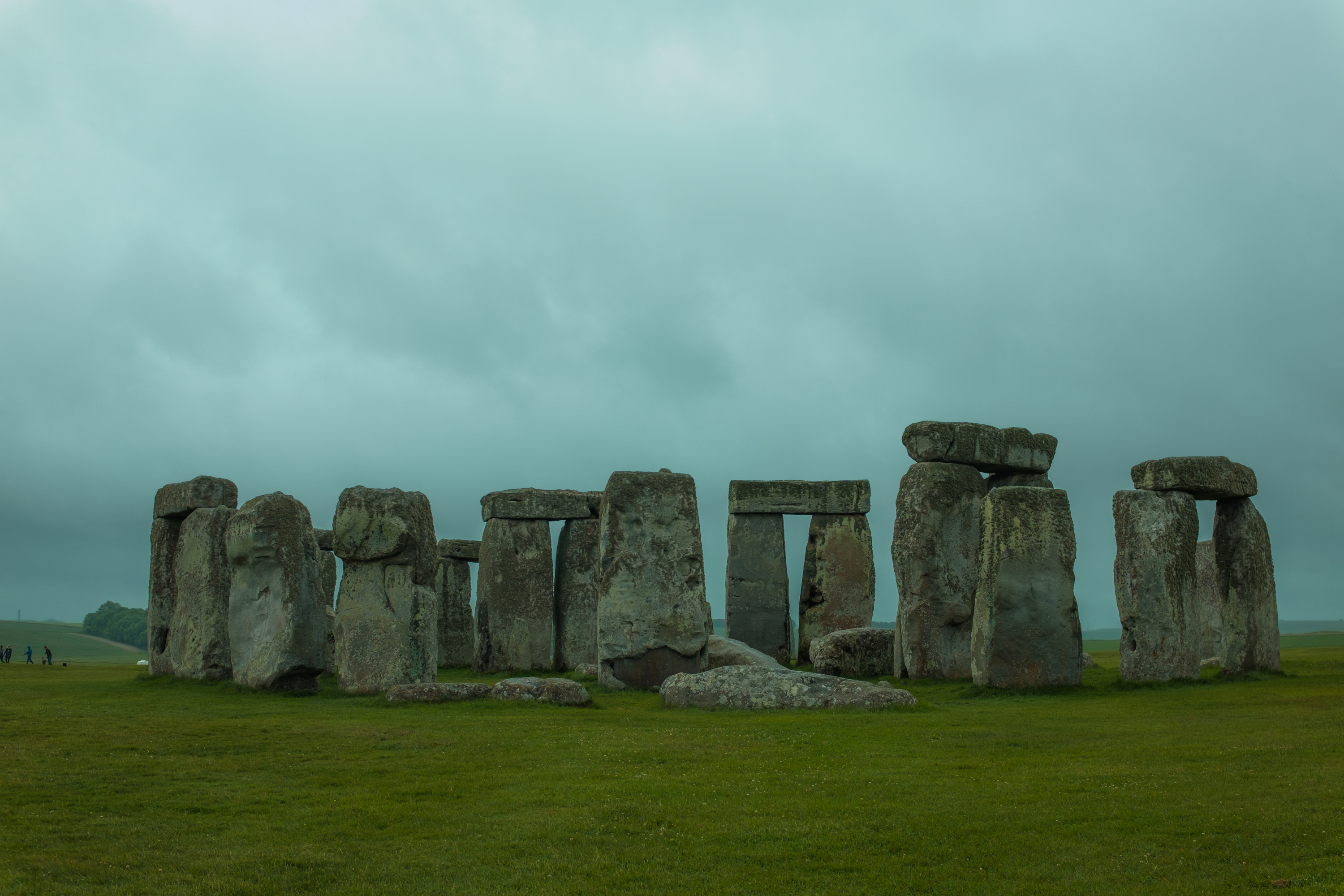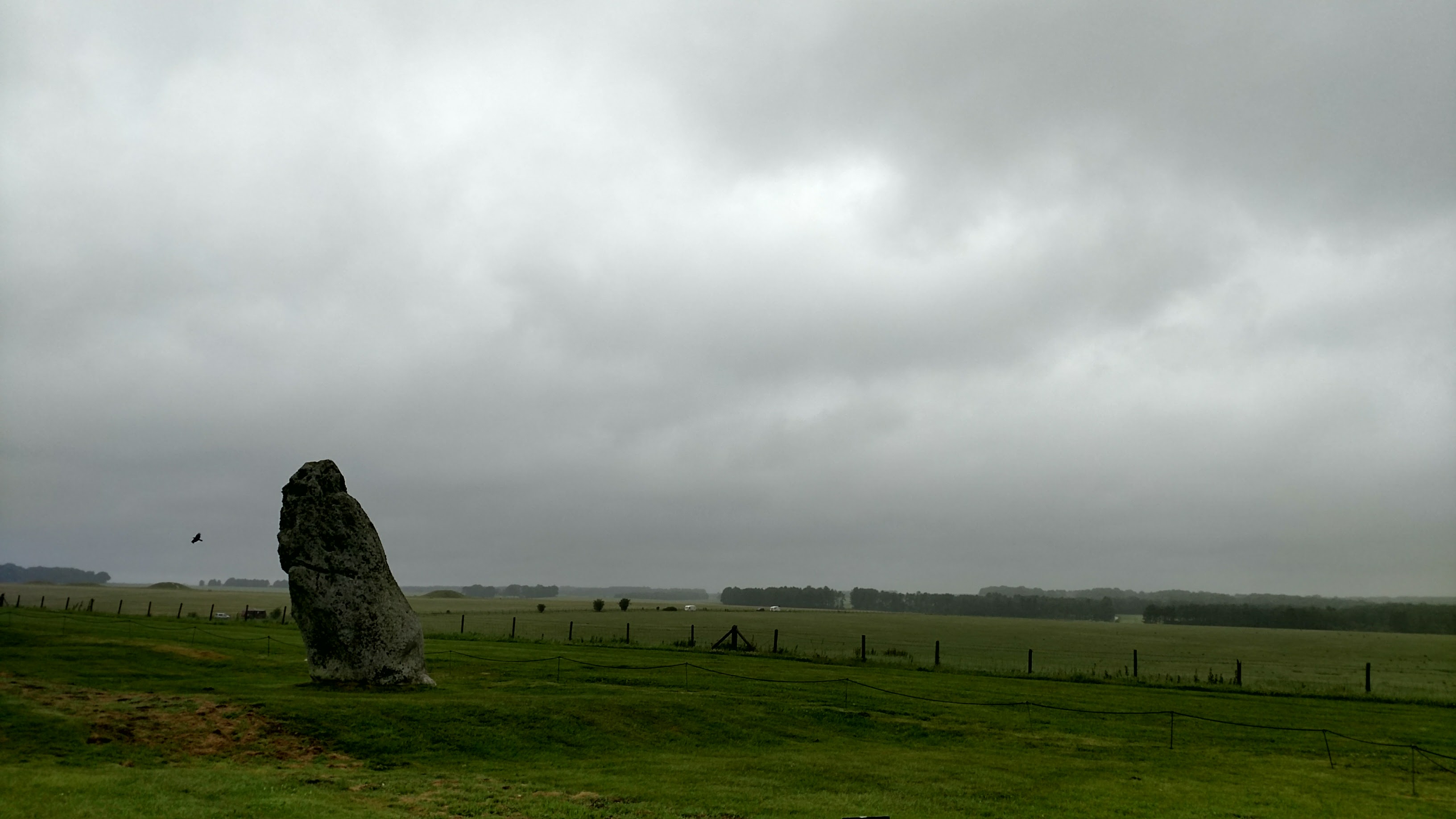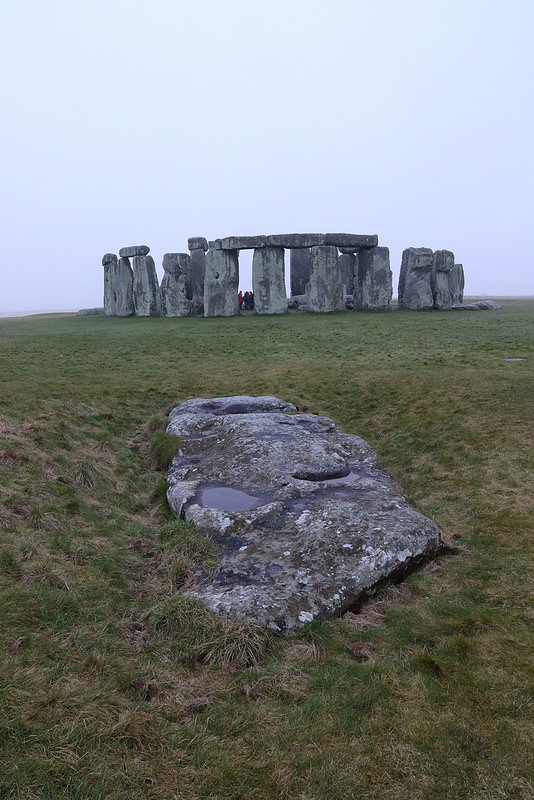Difference between revisions of "Stonehenge"
From Londonhua WIKI
(→Stones) |
|||
| Line 45: | Line 45: | ||
The Heel stone is a large upright stone, standing at the intersection between the Avene and the earthwork enclosure. The Heel stone is differentiated from all the other sarsen stones at Stonehenge by its natural, unworked exterior. The Heel stone may have been raised upright during the Neolithic period, and marks the place of the rising sun on the summer solstice. It is not known whether the Heel stone has always stood alone, or if it was originally part of a pair<ref>Stonehenge Glossary. (n.d.). Retrieved June 10, 2017, from http://www.english-heritage.org.uk/visit/places/stonehenge/things-to-see-and-do/glossary-text-version/</ref>. | The Heel stone is a large upright stone, standing at the intersection between the Avene and the earthwork enclosure. The Heel stone is differentiated from all the other sarsen stones at Stonehenge by its natural, unworked exterior. The Heel stone may have been raised upright during the Neolithic period, and marks the place of the rising sun on the summer solstice. It is not known whether the Heel stone has always stood alone, or if it was originally part of a pair<ref>Stonehenge Glossary. (n.d.). Retrieved June 10, 2017, from http://www.english-heritage.org.uk/visit/places/stonehenge/things-to-see-and-do/glossary-text-version/</ref>. | ||
<br><br> | <br><br> | ||
| + | |||
| + | ==Slaughter Stone== | ||
| + | {{Infobox | ||
| + | |header1 = Slaughter Stone | ||
| + | |bodystyle = width:25em | ||
| + | |image = [[File:Slaughter_Stone_Stonehenge.jpg|x450px]] | ||
| + | |caption = | ||
| + | }} | ||
| + | <br> | ||
=References= | =References= | ||
Revision as of 13:52, 10 June 2017
Stonehenge
 Image by Jacob Dupuis | |
| Stonehenge | |
|---|---|
| Year | 3000BC or Older |
Overview
Stonehenge is a prehistoric monument that is located in Wiltshire, England. It is a ring of standing stones that was probably used for ceremonial burials, and keeping the time of the seasons. It was also used as a burial ground. Archaeologists believe the site was constructed from around 3000 BC to 2000 BC. It is on the UNESCO's list of World Heritage Sites. Stonehenge is owned by the nation and managed by the English Heritage. The surrounding land is owned by the National Trust.
Contents
Background
Begin writing the background information of this article, or use this format to begin a new article with some other relevant section filled with important information.
History
The Stonehenge's age was discovered by the bones found around the site. The bones were carbon dated which gave us an estimate of how old the site is. The animal bones found around the site also gave us a clue for the purpose of this site. The meat was eaten, but the bone marrow was not indicating that this was a ritual or festival sight were humans gathered for enjoyment, eating carelessly.
Around 2500 BC the initial stones arrived at Stonehenge. These stones were sarsens and bluestones. The sarsens made up the inner horseshoe and an outer circle, while the bluestones were set up in a double arc between them. 200 to 300 years later the bluestones were rearranged to form a circle and inner oval.
Early History
Druids
Prehistoric Findings
Now
Stones
Heel Stone
 Image by Benjamin Secino | |
| Heel Stone |
|---|
The Heel stone is a large upright stone, standing at the intersection between the Avene and the earthwork enclosure. The Heel stone is differentiated from all the other sarsen stones at Stonehenge by its natural, unworked exterior. The Heel stone may have been raised upright during the Neolithic period, and marks the place of the rising sun on the summer solstice. It is not known whether the Heel stone has always stood alone, or if it was originally part of a pair[1].
Slaughter Stone
 | |
| Slaughter Stone |
|---|
References
- ↑ Stonehenge Glossary. (n.d.). Retrieved June 10, 2017, from http://www.english-heritage.org.uk/visit/places/stonehenge/things-to-see-and-do/glossary-text-version/
External Links
Image Gallery
If appropriate, add an image gallery